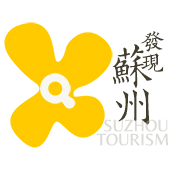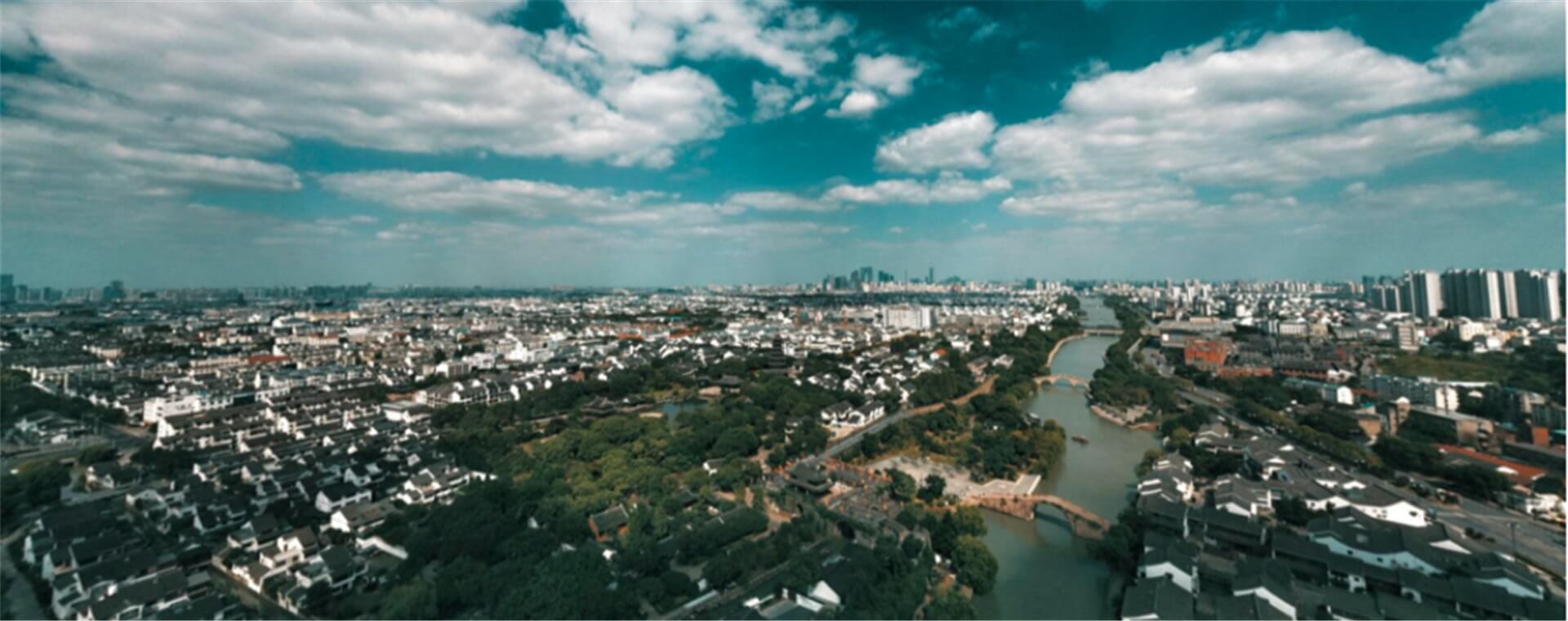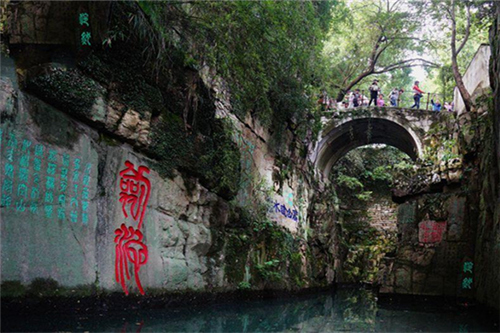
Address: No.8, Shanmennei, Tiger Hill District, Suzhou
Ticket price: off season: 60.00 yuan, peak season: 80.00 yuan
Hours: 07:30-17:30 all year round
Introduction of Huqiu mountain
Huqiu mountain scenic spot is located in the northwest corner of the ancient city of Suzhou. It has a long history of more than 2500 years. It has the reputation of “the first scenic spot in Wuzhong” and “the first mountain in Wuzhong”. It has been rated as one of the first ten demonstration sites of civilized scenic spots in China and national AAAAA scenic spot.
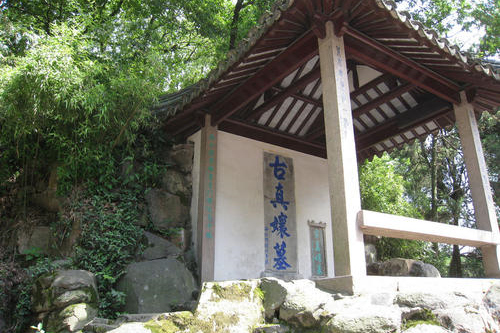
Legend
It is said that in the Spring and Autumn Period 2400 years ago, He Lu, King of Wu, was injured in the battle between wedge and Li in the state of Yue and died soon. His son buried him in Huqiu a few days after his death. It is said that three days after the burial, a white tiger squatted on the mountain, so his son renamed “Haiyong mountain” to Huqiu mountain.
Architectural Culture about Huqiu
Huqiu’s architecture is an important part of Huqiu’s cultural heritage beacuse it has various types and has a long history. The architectural style is in harmony with the natural landscape. Its forms include pagodas, halls, bridges, pavilions, towers, pavilions, tombs, etc. its age extends from the Five Dynasties to the present, showing the architectural styles of song, yuan, Ming, Qing, and Republic of China.
Huqiu pagoda (Yunyan Temple Pagoda) is 48 meters high. It is a seven story brick Pagoda with octagonal imitation wood structure and the only existing multi-storey building in Jiangnan that was built in the Five Dynasties. The waist eaves, flat seats and balustrades are all made of bricks, and the outer eaves and brackets are made of brick wood mixed structure. According to experts’ conjecture, eventhough the bedrock of the tower is on the slope of the mountain and the thickness of the filling soil is different, also the tower has not been built and has been inclined to the Northeast, but it has been standing for thousands of years.
Ershanmen is a building of Yuan Dynasty, and its structure inherits the architectural features of Song Dynasty. The ridge truss is made of two sections of logs, so it is commonly known as “broken beam hall”. Although its door leaf, couplets, roof tile decoration and some bucket arches have been repaired by later generations, they still maintain the style of Yuan Dynasty. Huqiushan temple is built in the mountains, which is the pattern of ancient temples in the deep mountains. The gate is built in the front of the mountain, which forms the pattern of the combination of the mountain temple, the temple covering the mountain, and the mountain temple. It is a special case among many famous ancient temples in ancient China.
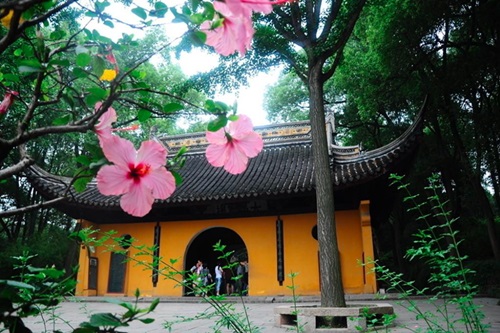
Humanistic Value:
Tiger Hill not only has the characteristics of sibaoshan, but also is a gathering place for scholars from all over the world. Gu Kaizhi of Jin Dynasty praised Tiger Hill as a place of “containing the real and hiding the ancient”, and King Guye of Southern Dynasty praised it as a place of “restraining the giant and beautiful mountains, believing in the victorious land of great Wu”.
At present, there are 56 steles in Tiger Hill mountain, including one in the Later Zhou Dynasty, one in the Yuan Dynasty, 12 in the Ming Dynasty, 25 in the Qing Dynasty, seven in the Republic of China, four in the unknown age, and 16 after 1949. The stele Pavilion in the pagoda and the plaque of ” Tiger Hill pagoda ” in the gate of Toushan reveal the flavor of the royal garden.
Major attractions in the garden
Sword pool
Huqiu is the most famous of the two major attractions, one is Huqiu tower, the other is the sword pool. There are three reasons to call it Jianchi: first, if you look at it from above, it looks like a flat sword; second, it is said that there were 3000 Bianzhu and Yuchang swords buried for Helu, the king of Wu, so it is named; another is that both Qinshihuang and Sunquan came here to dig swords, and the Jianchi was dug by them. In fact, the Jianchi was formed naturally and Jianchi can be said to be the most mysterious place in Huqiu. It is said that the opening of the tomb of King Helu of Wu is here.
The two red characters are “Jianchi”, which is said to be written by Wang Xizhi, a famous calligrapher in the Eastern Jin Dynasty. The four blue characters are “Fenghe Yunquan”, which is written by Mi Fu, a famous calligrapher in Song Dynasty. These four characters completely summarize the scenery here. They mean that you can listen to the wind, look up at the rocks clouds and look down at the Liuquan.
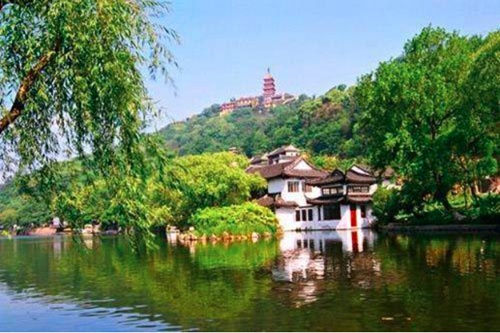
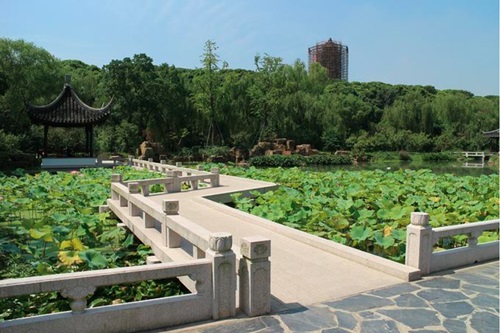
Tiger Hill pagoda
Tiger Hill pagoda is the second leaning Pagoda in the world, the first leaning Pagoda in China, and the symbol of Ancient Suzhou – “Yunyan Temple Pagoda”, commonly known as ” Tiger Hill pagoda “. On March 4, 1961, it was designated as the national key cultural relics protection unit by the State Council. It was built in 959 A.D. in the sixth year of Zhou Xiande after the Five Dynasties and in 961 A.D. in the second year of song Jianlong and has a history of more than 1000 years. The tower has seven floors and eight sides, and is 47.7 meters high. It is an inclined tower. How much is it inclined? The top of the tower is 2.34 meters away from the center, with a maximum inclination of 3 degrees 59 minutes. Tiger Hill pagoda is also known as the “Leaning Tower of Pisa in China”. This pagoda is the earliest existing Pagoda in Jiangnan with large scale and exquisite structure. However, the tower is inclined but does not fall down, so it is even more precious.
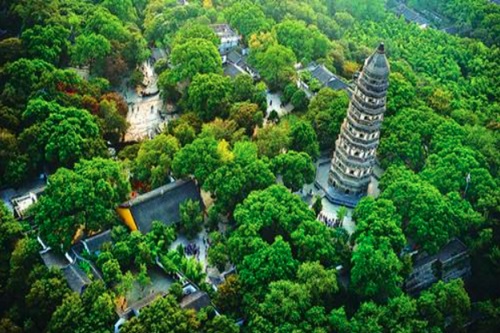
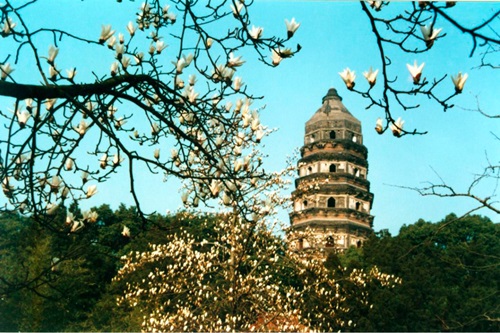
This is the only case in the country, which makes the tower has a unique and important position in Architectural Science, plastic arts, historical research and other aspects. Tiger Hill is the witness of 2500 years of vicissitudes in Suzhou and also standing high on the top of the mountain has become the symbol of Suzhou. Therefore, it confirms Su Dongpo’s words that you have to visit Tiger Hill in Suzhou.
Folk Culture
Historically, the scenic spots of Huqiu have provided a place for citizens to exchange and gather, and gradually formed a series of sightseeing and gathering activities with strong folk customs and Wu culture characteristics, including Peony City in spring, Chengliang city in summer, Muxi city in autumn, and “three cities and three festivals” in Qingming, July and October dynasties The peony with natural color and fragrance, or enjoy the cool breeze of quiet and broad, or smell the sweet clover of refreshing. There are also the famous Mid Autumn Festival and Lantern Festival.
Huqiu’s “three cities and three festivals”, Song Festival, Lantern Festival It is the precious heritage of folk intangible heritage, which fully shows the charm of traditional culture. Huqiu is also the source of creation of ancient literati painters, providing them with a wealth of artistic inspiration, writing and painting countless poems and calligraphy. Huqiu’s nature, history, culture and folk custom is a condensed brief history of Suzhou.
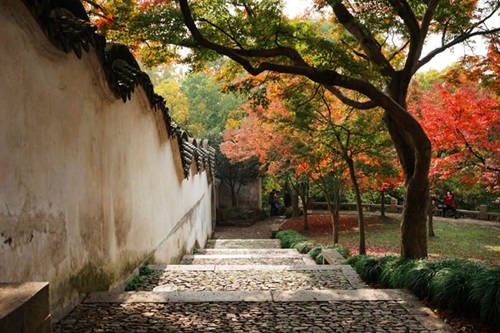
Local specialties:
Tiger Hill Baiyun tea
It is said that Tiger Hill Baiyun tea was first cultivated by Lu Yu. Baiyun tea is also called “tea before rain”.
Tiger Hill Baiyun tea originated in Shexian County, Anhui Province. Later, it was introduced into Tiger Hill. About 10 mu of land in Houshan was used to plant more than 10000 Baiyun tea. Because of its excellent taste, it attracted tourists to enjoy tea. Tiger Hill scenic spot successfully registered the trademark of “Yunyan tea”. However, due to the limited output of tea, it only has tea in lengxiangge and yunzaixiang tea rooms in Tiger Hill scenic spot For sale.
Tiger Hill Mat weaving
Suzhou huxu mat, in Qing Dynasty, residents near Tiger Hill in Suzhou used Kuai grass to make straw mat. In the past, the residents around the mountain used to weave mats with various kinds of grass. They called them “tiger beard mats” everywhere. They were extremely skillful, and they could not find enough space. This kind of Kuai grass weaving mat, Huguan is even more, but Tiger Hill place name still has no seat field lane Nowadays, Tiger Hill Mat weaving is rare.
Tiger Hill flower
Tiger Hill has a long history of flowers and is famous all over the world, especially fragrant flowers, which have been planted in Tiger Hill for nearly a thousand years. In the old days, farmers in Tiger Hill area planted flowers. Every day at dawn, there is a flower market from Shantang street to zhengshanmen of Tiger Hill. The more famous flowers are jasmine, white orchid and Dai Dai flower. The flower girl ties jasmine and Dai Dai flower into various flower balls and bouquets, and weaves them into small and exquisite “flower cocoons” with wheat straw, which contain several brandy or Dai Dai flowers, and sells them along the streets in the city. Wu Nong’s soft words and fragrant flowers are a scene of Suzhou in the old days. Today, friends visiting Tiger Hill can still see an old woman with a bamboo basket at the entrance of Toushan mountain, shouting and selling jasmine and white orchid. When the fragrance comes, you might as well wear one or two of them, which not only suits the scenery, but also beautifies your heart.
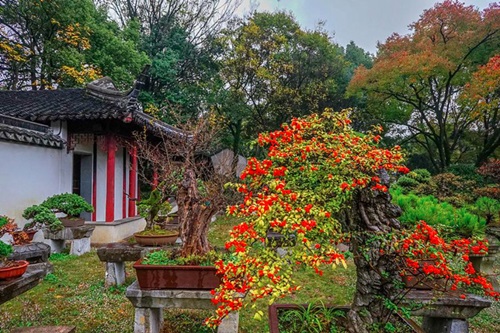
Activities
Every year, several Flower Fairs and temple fairs are held in Tiger Hill (the Spring Festival Flower Fair is held during the Spring Festival, the spring flower fair from the end of March to may, and the golden autumn temple fair is held in September). A large number of famous Chinese and foreign flowers and plants will be displayed, with beautiful scenery and performances. It is a good time to visit Tiger Hill.
Service facilities: parking lot, luggage storage, explanation of the scenic spot, map of the scenic spot, traffic in the park, rain gear rental, toilet, mother and baby room, vending machine.
